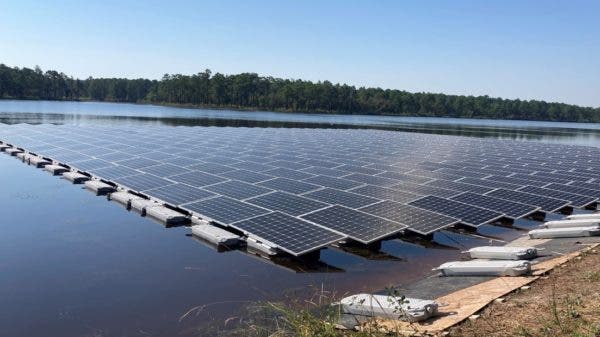The U.S. solar industry’s growth trajectory is incredibly strong.
That’s what Michelle Davis, Wood Mackenzie’s Head of Global Solar, stated in an opinion piece published on the company’s website recently, adding that, “within just a few short years, the industry will be regularly installing 40-50 gigawatts of capacity according to our latest outlooks”。
“This is quite the feat when you consider the most the industry has installed to date was 25 GW in 2021,” Davis said in the piece.
“Over the next decade, annual average growth will be 11 percent and the installed base of projects will multiply nearly five times, from 150 GW installed today to nearly 700 GW installed by 2033,” Davis added.
This growth represents an enormous amount of capital investment, the Wood Mackenzie representative noted in the piece.
“Today’s solar market represents about $45 billion in capital expenditures annually on solar projects,” Davis highlighted in the Wood Mackenzie opinion article.
“By 2033, that number will almost double to $72 billion per year,” Davis added.
In the piece, Davis noted that, as the U.S. solar industry grows, it will evolve to make up the largest share of generating capacity in the country.
“According to our analysis, utility-scale solar will make up 40 percent of generating capacity in the U.S. by 2050 – and that doesn’t even include any distributed solar serving electricity load behind-the-meter,” Davis said in the piece.
Solar Coaster
Davis also highlighted in the article that high levels of growth present challenges.
“The solar industry has been through its fair share of challenges – hence, the ‘solar coaster’ – but these will not abate as the industry grows larger,” Davis said.
“The most pressing challenge today is interconnecting a project to the transmission system. The time it takes for a project to interconnect to the grid from the date it enters the interconnection queue has expanded to four years,” Davis added.
“To compare, this was roughly two years a decade ago. Transmission capacity has become more limited as more projects have been built, and very few new transmission lines have been built in the last decade,” Davis continued.
The Wood Mackenzie representative also outlined in the piece that there are policy challenges.
“Distributed solar projects typically face challenges to net energy metering (that is, retail rate compensation for solar production) as market penetration increases,” Davis said.
“Most states with a lot of distributed solar (think Hawaii, California, Arizona and Nevada) have shifted away from net energy metering, changing the way that distributed solar gets compensated,” Davis added.
Opportunities
Davis went on to note in the piece that challenges present new opportunities for investment in solar and storage.
“Given these challenges, there are numerous opportunities for investment in the solar projects of tomorrow, that look different than they do today,” Davis said in the article.
“The best opportunity, and perhaps the most obvious, is to pair solar projects with storage much more frequently than is done today. This will help to limit low-value midday solar exports which are already causing havoc on highly penetrated grids and increasing curtailment (aka waste),” Davis added.
“There are many other areas of opportunity as well – grid-forming inverters, greater penetration of home and building energy management systems, cost-effective revenue-grade meters that enable wholesale market participation – the list goes on,” Davis continued.
USA Solar Capacity
According to BP’s latest statistical review of world energy, which published in 2022, installed photovoltaic power in the U.S. came in at 93.7 GW in 2021.
This marked a 27.3 percent year on year growth rate from the figure of 73.8 GW seen in 2020, the review highlighted. Installed PV power in the U.S. was 59.1 GW in 2019, 49.8 GW in 2018, 41.4 GW in 2017, 33.0 GW in 2016, 21.7 GW in 2015, 16.0 in 2014, 11.8 GW in 2013, 8.1 GW in 2012, and 5.2 GW in 2011, the review showed.
The country with the highest installed PV power figure in 2021 was China, with 306.4 GW, according to the review, which revealed that the U.S. placed second overall that year, and that Japan ranked in third place in 2021 with 74.2 GW.
China took the solar capacity top spot from Germany back in 2015, producing 43.5 GW at the time, the report showed. It has held the top spot ever since, the review outlined.
Total world solar capacity in 2021 was 843.1 GW, according to the review. This marked a 19 percent year on year growth and a 27.9 percent year on year growth from 2011 to 2021, the review highlighted.






